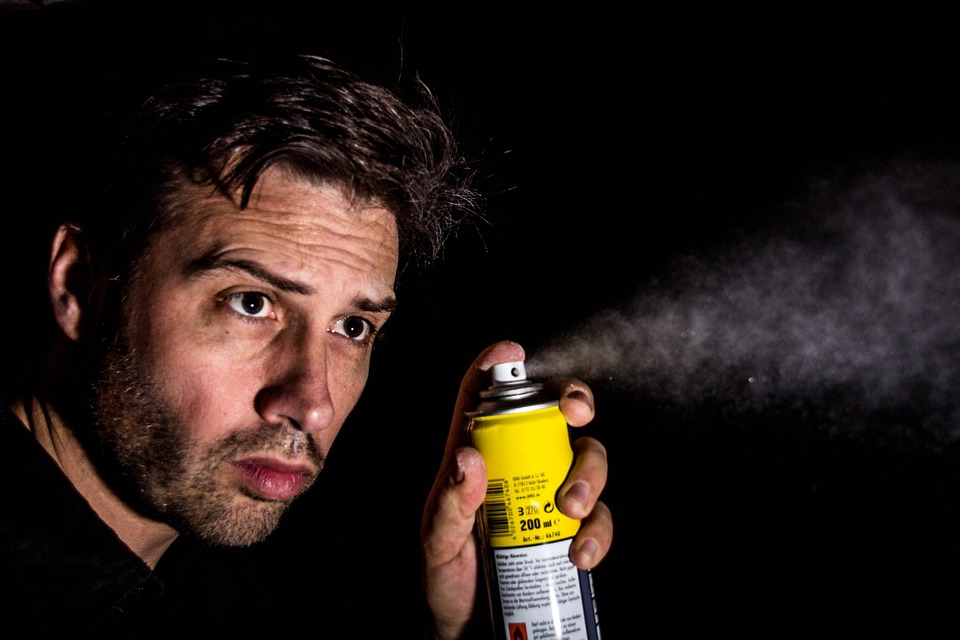
While many of us always try to choose the greenest options when it comes to our household products, there are some items that contain harmful chemicals that are needed to get the job done. It is true that there are many green versions of some of the products listed in this article, however, the vast majority of the world today is still purchasing unsustainable, toxic elements inside common everyday objects such as paints and fertilizers.
The products we buy, when not disposed of in a safe manner, can often damage the well-being of our own families, our communities, and the environment as a whole. Each household in the US produces kilo after kilo of waste each year that is deemed hazardous yet is not disposed of correctly, instead, it is placed in the trash bin along with other recyclable items. Let’s take a look at some of the key culprits prevalent in our homes and in society and how to deal with them effectively:
1. Aerosol Products
Aerosols have been known to cause greenhouse gases since their invention many decades ago, however, their use is still widespread although with less potent gases than originally used. For recycling purposes the cans are usually aluminum and can be placed with items like tins, the tops are usually non-recyclable plastic. Spraying aerosols such as deodorants excessively in your home can lead to a build-up of gases harmful to your health and the planet.
If there is still liquid left in the can you shouldn’t throw it in the trash as it can explode when pressured in the garbage truck- take it to the waste recycling centre unless it explicitly states otherwise.
*Chlorofluorocarbons, also known as CFCs, have been banned in America since the late 70s.
2. Solvents, Thinners, and Paints
Most houses require internal painting every few years as the colour fades, and now there’s more than ample choice to replace it with thousands of colours. However, of the millions of oily-based tins produced each year only a small portion of these are eco-friendly. Paint thinners have been specially formulated so they’re not a substance you would find in the natural world, consequently, this substance as well as many other solvents will kill any plant or animal life it comes into contact with.
You must never pour excess oils and solvents down the drain or toilet. Not only are they flammable but they are extremely difficult to cleanse from the water supply- many recycling centres have provisions for solvent recycling.
*Some lead paints have been found to contain neurotoxicants and carcinogens– causing cancer and affecting brain function severely.
3. Home Cleaning Products
These products are probably some of the worst because we buy each week during our grocery shop and most of the time without even thinking about the contents. Non-ionic surfactants are used primarily in addition to other harmful chemicals such as peroxides. Green surface cleansers and washing-up liquids are readily available at a slightly higher cost but the benefit to the environment and your family outweighs this.
Never pour leftover liquids down the drain or toilet as this is the fastest way for it to enter the system to be processed for cleansing. Drain cleaners can be especially toxic and most waste recycling centres accept and process these chemicals safely.
*Ap large portion of the US water supply in the form of freshwater rivers contains disinfectants from household waste.
4. Items Containing Mercury
Known to kill brain cells on contact, mercury is a very dangerous and poisonous liquid metal whose properties have been exploited in the creation and design of thermometers, old children’s toys and even mirrors. When contained inside a tube the mercury is not able to affect the environment, however, if it is broken then it can quickly affect everything in its vicinity- it can even poison a whole town’s water supply causing death.
You can’t throw anything that contains mercury in the regular trash- it’s actually illegal- but instead, they need to be taken to a dedicated local waste site.
*Mercury manufacturing and importing is banned in both Norway and Sweden.
5. Garden and Plant Chemicals
For those of us who love a blooming garden with bright green grass, there is a myriad of products on the market which promise to do one thing or another. Lawn fertilizers and pesticides for plants and flowerbeds are big sellers around the world and have the potential to change whole ecosystems. Other solutions to rid the garden of bugs that devour plant leaves and vegetables can often kill off the invasive species but also transfer a small amount of the poisonous chemicals into your food.
Always try to buy organic wherever possible and look for tried and tested natural solutions to prevent unwanted critters. Try to buy only what you will use to reduce waste, and most recycling plants know how to process these leftover chemicals correctly.
*Weed killers like Roundup used in commercial farming have killed off much of the milkweed in the US leading to an 80% decline in Monarch butterflies which only lays eggs on this specific plant.
Keeping Your Home Toxin-free
What comes into your home depends largely on you and your beliefs. If you’re not reading the labels and choosing the cheapest brand on the shelf then your home environment is likely to suffer more than if you saw what was actually in your everyday products. There are numerous eco brands across all ranges of daily cleaning items and choosing them ensures there are no lingering toxins present in your home, and thus the environment as a whole.
Every town and locality has a recycling center where dangerous products like these can be taken care of safely. Always read the small print on the back of your products and look for natural products as much as possible; the Internet is also full of tips and tricks you can use to live a greener life and swap the nasty surfactants for a more wholesome option.

About the Author
Jen is your go-to guru for crafting a cozy, green cocoon. 🪴 Her dive into sustainable building wasn’t just about saving the planet—it started as a mission to make family movie nights eco-friendly (and to ensure the popcorn was the only thing getting heated!). With a knack for breaking down the jargon, Jen turns eco-lingo into everyday language. Swing by the Green Living blog for a mix of earth-loving advice and home improvement hacks. Whether you’re just dipping your toes into green waters or you’ve been swimming in the deep end of DIY projects, Jen’s here to guide, giggle, and remind you that every eco-choice is a step towards a planet that thanks you… and maybe even sends a rainbow your way! 🌈

